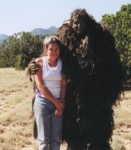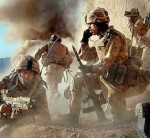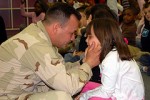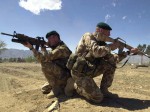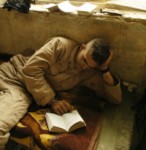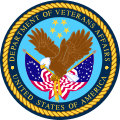Staying current on new trends in helping the Troops deal with Combat Trauma is important to helping mental health professionals as well as those impacted by complicated issues like PTSD, TBI, Military Sexual Trauma, combat stress, etc.
Current Thinking is Shifting
Current thinking about the treatment of Combat Trauma is shifting from a Disease or Illness modality (something that happens to Warriors caused by mental illness or disease resulting from combat stress) to a Cognitive-Perceptive perspective (something that is a latent part of everyone’s mental processes and awakened in the Warrior through training and further nurtured by combat experiences). Solutions to the negative aspects of this phenomenon can be achieved from two perspectives:
- Proactively, using Prevention by Inoculation or enhanced understanding approaches.
- Recovery and Clinical Intervention solutions involving enhancing the Warriors understanding of the self and coaching on the approaches to achieve self-directed recovery.
Simply stated, the process involves:
1. Enhancing understanding:
- Of the self, at the cognitive level and the role awakening the primal self (the Monster or the Beast) during the training and combat experience is necessary to achieve Unit Cohesion and success in battle and which is further nurtured by combat experiences, drives the Warrior mind-set.
- These feelings once initiated never go away; the lust for the adrenaline rush of battle will always exist.
- These feeling are normal and reoccur in most Warriors long after their combat experiences.
- Unresolved, these feeling can negatively impact the Warrior’s life in many ways, sometimes ending in suicide or the abuse or death of others.
- It’s possible to control these feelings and Innovate, Adapt and Overcome to achieve a meaningful life.
2. Solutions:
- Confrontation & Reprogramming the self by enhanced understanding, obtaining help from professionals and other Warriors further down the path to recovery as well as self discovery with help from others.
- Mastering techniques to Innovate, Adapt and Overcome.
- Using achievements to make further progress by helping others who are at other points along their journey.
This is the foundational thesis of my book The Warriors Guide to Insanity.
This was further reinforced by some recent information you may find helpful:
- From the late, Donald Rossi, Ph.D., ABPP, Resilience and Restoration Center, Department of the Army, Headquarters, Carl R. Darnell Army Medical Center, Fort Hood, Texas
Every once and awhile, a truly great person comes into your life. The late Dr. Donald Rossi was one such rare and truly enlightened sole. He dedicated his life to serving those who suffered from life threatening traumatic experiences, in law enforcement and the military.
Dr. Rossi was a Fellow Marine, and Vietnam Combat Vet. He was an Inspiration and role model. With his Wife Toni Rossi’s permission, she and I continue to advocate Dr. Rossi’s Model for helping our Troops deal with Combat Trauma. Toni Rossi, like Don, is another incredibly insightful and compassionate individual concerned about our Young Warriors.
A fellow Marine Brother and Combat Veteran from Vietnam, Dr. Rossi understood the effects of war all too well. And over the course of his extremely productive career, he formulated a psychological model for dealing with Combat Trauma…a model that works.
With the permission of Mrs. Toni Rossi, I am presenting Dr. Rossi’s model for all to see. His unique understanding of the Primal Side of the human nature is saving the lives or our Troops to this day.
Don was a true Warrior, selflessly helping other Warriors, not only to understand the traumas of war that can and do rip their lives apart, but also to develop an understanding within them, that through their own strength, they may lead a productive and joyful life.
It was an Honor to know him. It was even more of an Honor to call him…Friend.
What follows is the foundational thesis he developed as a result of his over 25 years of experience in dealing with Combat Trauma. Note: I’ve intentionally bolded key sections for emphasis.
Subject: COMBAT STRESS: Resilience and Restoration
By: Dr. Donald Rossi, Ph.D., ABPP Resilience and Restoration Center Department of the Army Headquarters, Carl R. Darnall Army Medical Center Fort Hood, Texas
Explain: (1) PTSD (a) misnamed (b) myth c) disease vs. wound model (d) events driven vs. GAS model.
Define: (1) Trauma (2) Stress (3) Combat Stress vs. PTSD.
I. There is one program which is in two dimensions:
(A) Prevention or inoculation – a training function for War-fighting Mind Set.
(B) Recovery-a clinical intervention for the casualties who are wounded by Combat Stress.
II. Prevention-inoculation is ongoing throughout the service time of a soldier. Beginning during recruit training it continues in advancing and more complex forms throughout a career.
(A) These stages are designed for level of responsibility within the Army:
(1) Pre-NCO,
(2) Jr. NCO,
(3) Sr. NCO,
(4) CO Grade. Officer,
(5) Field Grade Officer
(6) Flag Officer.
III. Clinical intervention (Recovery) is to be conducted in keeping with an injury or wound rather than an illness or pathology. This calls for a new set of techniques which are consistent with health rather than illness. These methods will be identified and discussed when appropriate.
IV. The Phenomena considered from a Cognitive-Perceptual perspective rather than a disease or illness model.
(A) Shift from event as cause to personal meaning of event as cause.
(B) Explanation for differences between soldiers.
(C) Significance of “homeostasis” for understanding the dual environment model.
(1) Significance of each environment to the other.
(2) Significance of arousal to stimuli.
V. Significance of difference between “stress management techniques” and expanding the primal base of understanding and functioning properly with a broader range of the natural human capability.
(A) Understanding and operationalizing of the conflict between the primordial and civilized.
(B) Mental health issues originate from the process of harnessing the instinctual with the civilized.
(C) War fighting requires the ability to “regress in the service of the ego” and utilize “instinctual” levels of behavior and when completed appreciate the humanness of the totality of one’s self.
(D) Understand that the “monster” is not an enemy but rather an important part of our self. The “Monster” is the primordial part of our self that has been banished through the process of civilization.
(E) War fighting requires the awakening of the “Monster” and after word it is to be integrated into the whole of the person.
(F) At present the “Monster” is generally regarded as the enemy and is to be returned to its cage.
(G) This is a technical error.
VI. Realization by the soldier that he has not only changed but will never return to the past and that in fact to attempt to return will only make the situation worse. The new or changed person now has the expansion of the totality of self. Contemporary methods tend to compartmentalize, isolate and remove what in fact is critical for the healthy integration of the whole person.
(A) What many soldiers and clinicians attempt is to avoid the painful. This is a technical error.
(B) The soldier needs help to confront that which is painful and realize that the pain is the result from a dissonance in thoughts and beliefs which makes him appear to himself as a “freak”. Recovery from Combat Stress is achieved through the resolution of the dissonance.
(C) This is not the same as treating anxiety or any neurotic condition.
(D) A re-programming and expanding of beliefs and values is required (treatment of the conscience developmentally rather than clinically).
(E). The soldier also learns to integrate himself rather than fragment himself.
(G) Resulting from the integration the soldier comes to the realization that he is different from the rest of society and in a “superior” way. He comes to peace with the wholeness of his person.
(H) The soldier is then able to see that the proof of his recovery is in how he uses his achievements to help others who are at other points along their journey.
VII. Soldier needs to know his heritage, and ethos both personal and Army.
(A). What is his meaning as the person he is.
(B) How is he related to the ethos of the Army
(C) How is the ethos of the Army the key to meaning of the military in a constitutional democracy.
(D) The soldier discovers his real meaning which is far beyond war-fighting.
(E) This includes the primordial and evolutionary process of mankind.
(F) Without a command of one’s past the future is limited.
VIII. The inoculation or resilience program achieves the preparation of the soldier while the restoration program is the rehabilitation from the wounds of Combat Stress.
IX. Sgt. Brandi’s book is the only one of its kind and speaks to the unconscious. When used correctly it is both a manual for resilience and in the rehabilitation context a manual for restoration of the whole person.
(A) Sgt Brandi emphasizes restoration and that the beast is oneself.
(B) This is an essential for restoration.
(C) Additionally he focuses on the journey to restoration and clearly points out that it is the soldier’s responsibility not the rest of the world.
(D) Sgt Brandi’s book needs to be translated into manual for clinicians.
(E) Sgt Brandi’s book needs to in-formulated into an SOP for NCO’s and Officers.
X. Truth is the key to resilience and restoration. Both programs emphasize the truth about the human condition and the confrontation with War fighting. That truth requires that the soldier visit places within and about himself that are not normally a part of one’s development or training.
The Monster (The Beast)
Here’s another discussion of The Beast.





